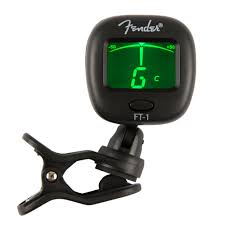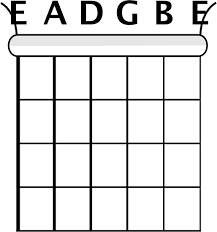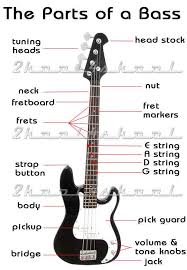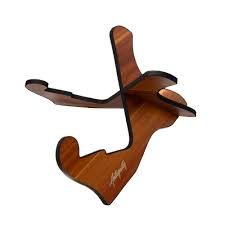The Importance of Using a Guitar Tuner
Playing the guitar is an enjoyable and fulfilling experience, but it can quickly become frustrating if your instrument is out of tune. This is where a guitar tuner becomes an essential tool for every guitarist, whether you are a beginner or a seasoned musician.
A guitar tuner is a device that helps you adjust the pitch of each string on your guitar to ensure they are in tune with each other. By using a tuner, you can achieve accurate tuning quickly and easily, resulting in better sound quality and overall performance.
One of the main advantages of using a guitar tuner is that it helps train your ear to recognise different pitches and develop your sense of pitch accuracy. This is particularly important for beginners who are still learning how to tune their instrument by ear.
Furthermore, using a guitar tuner can also extend the lifespan of your strings and prevent unnecessary wear and tear on your instrument. When your guitar is properly tuned, it reduces the tension on the strings and ensures that they vibrate at the correct frequency, which can help prevent breakage and maintain their tone quality.
Whether you play acoustic or electric guitar, having a reliable tuner in your toolkit is essential for maintaining the integrity of your instrument and enhancing your playing experience. With advancements in technology, there are now various types of tuners available, from traditional clip-on tuners to smartphone apps that offer convenient tuning solutions.
In conclusion, investing in a good quality guitar tuner is not only beneficial for keeping your instrument in tune but also for improving your playing skills and overall musical performance. Make sure to include regular tuning sessions as part of your practice routine to ensure that you always sound your best.
Top 5 Essential Tips for Perfect Guitar Tuning
- Ensure your guitar is in tune before every practice session or performance.
- Use an electronic tuner for accurate tuning. Clip-on tuners are convenient and easy to use.
- Start tuning from the thickest string (lowest pitch) to the thinnest string (highest pitch).
- Adjust the tuning pegs slowly and carefully to avoid over-tightening or loosening the strings.
- Check the tuning regularly while playing, as temperature and humidity changes can affect it.
Ensure your guitar is in tune before every practice session or performance.
It is crucial to ensure that your guitar is in tune before every practice session or performance. A well-tuned instrument not only enhances the sound quality of your playing but also helps you develop a better ear for pitch accuracy. By making tuning a regular part of your routine, you can maintain the integrity of your instrument, prevent unnecessary wear on the strings, and ultimately improve your overall musical performance. Taking the time to tune your guitar before each session shows dedication to your craft and sets the stage for a more enjoyable and successful playing experience.
Use an electronic tuner for accurate tuning. Clip-on tuners are convenient and easy to use.
For accurate tuning of your guitar, it is recommended to use an electronic tuner, such as a clip-on tuner. Clip-on tuners are known for their convenience and ease of use, making them a popular choice among guitarists of all levels. Simply attach the tuner to the headstock of your guitar, pluck a string, and the tuner will display whether the note is in tune or needs adjustment. This reliable tool ensures precise tuning, helping you achieve optimal sound quality and enhancing your overall playing experience.
Start tuning from the thickest string (lowest pitch) to the thinnest string (highest pitch).
When using a guitar tuner, it is important to start tuning from the thickest string, which produces the lowest pitch, and then move towards the thinnest string, which produces the highest pitch. This method ensures that you establish a solid foundation for tuning your instrument, as it allows you to adjust the strings in a systematic order that corresponds to their pitch range. By following this tip, you can achieve accurate tuning across all strings and maintain harmonious sound quality while playing the guitar.
Adjust the tuning pegs slowly and carefully to avoid over-tightening or loosening the strings.
When using a guitar tuner, it is crucial to adjust the tuning pegs slowly and carefully to avoid over-tightening or loosening the strings. Sudden or excessive turns of the pegs can lead to string breakage or cause the guitar to go out of tune quickly. By making gradual adjustments and listening closely to the changes in pitch, you can achieve precise tuning without putting unnecessary strain on your instrument. Remember, patience and attention to detail are key when fine-tuning your guitar for optimal sound quality and playability.
Check the tuning regularly while playing, as temperature and humidity changes can affect it.
It is crucial to check the tuning of your guitar regularly while playing, as fluctuations in temperature and humidity can impact the stability of your instrument’s tuning. Changes in environmental conditions can cause the wood and strings of the guitar to expand or contract, affecting the tension and pitch of the strings. By staying mindful of these factors and making adjustments as needed, you can ensure that your guitar remains in tune for optimal sound quality and performance.






